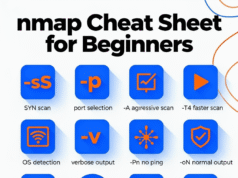Welcome to the Red Team Interview Questions repository! This repository aims to provide a comprehensive list of topics and questions that can be helpful for both interviewers and candidates preparing for red team-related roles.
Whether you’re looking to assess your knowledge or preparing to interview candidates, these questions cover a wide range of essential topics in the field of red teaming.
Table Of Contents
- Initial Access
- Windows Network
- Active Directory
- OS Language Programming
- PowerShell
- Windows Internals
- DNS Server
- Windows API
- Macro Attack
- APT Groups
- EDR and Antivirus
- Malware Development
- System & Kernel Programming
- Privilege Escalation
- Post-exploitation (and Lateral Movement)
- Persistence
- Breaking Hash
- C&C (Command and Control)
- DLL
- DNS Rebinding
- LDAP
- Evasion
- Steganography
- Kerberoasting and Kerberos
- Mimikatz
- RDP
- NTLM
- YARA Language
- Windows API And DLL Difference
- Antivirus and EDR Difference
- NTDLL
- Native API
- Windows Driver
- Tunneling
- Shadow File
- SAM File
- LSA
- LSASS
- WDIGEST
- CredSSP
- MSV
- LiveSSP
- TSpkg
- CredMan
- EDR NDR XDR
- Polymorphic Malware
- Pass-the-Hash, Pass-the-Ticket or Build Golden Tickets
- Firewall
- WinDBG (Windows Debugger)
- PE (Portable Executable)
- ICMP
- Major Microsoft frameworks for Windows
- Services and Processes
- svchost
- CIM Class
- CDB, NTSD, KD, Gflags, GflagsX, PE Explorer
- Sysinternals Suite (tools)
- Undocumented Functions
- Process Explorer vs Process Hacker
- CLR (Common Language Runtime)
Initial Access:
Question 1:
How do you typically gain initial access to a target network?
- Answer: Initial access to a target network is typically gained through techniques such as phishing, exploiting vulnerabilities, or leveraging misconfiguration.
Question 2:
What are some common methods used for gaining initial access to a target network
- Answer: Common methods include:
- Phishing attacks
- Exploiting software vulnerabilities (e.g., remote code execution)
- Brute-force attacks on authentication mechanisms
- Social engineering tactics
Question 3:
Can you explain the difference between phishing and spear phishing?
- Answer:
- Phishing: A generic term for deceptive email messages aimed at tricking recipients into divulging sensitive information or installing malware.
- Spear Phishing: A targeted form of phishing that tailors the attack to a specific individual or organization, often using personalized information to increase the chances of success.
Question 4:
How can an attacker exploit vulnerable services to gain initial access?
- Answer: Attackers can exploit vulnerable services by targeting known vulnerabilities in software running on networked devices. This includes unpatched operating systems, outdated software versions, or misconfigured services exposed to the internet.
Question 5:
Describe a scenario where an attacker leverages social engineering for initial access.
- Answer: In a social engineering scenario, an attacker might impersonate a trusted individual or organization to trick a victim into revealing login credentials, downloading malware disguised as legitimate software, or providing access to sensitive information.
For more informtion click here.












%20Works.png)




